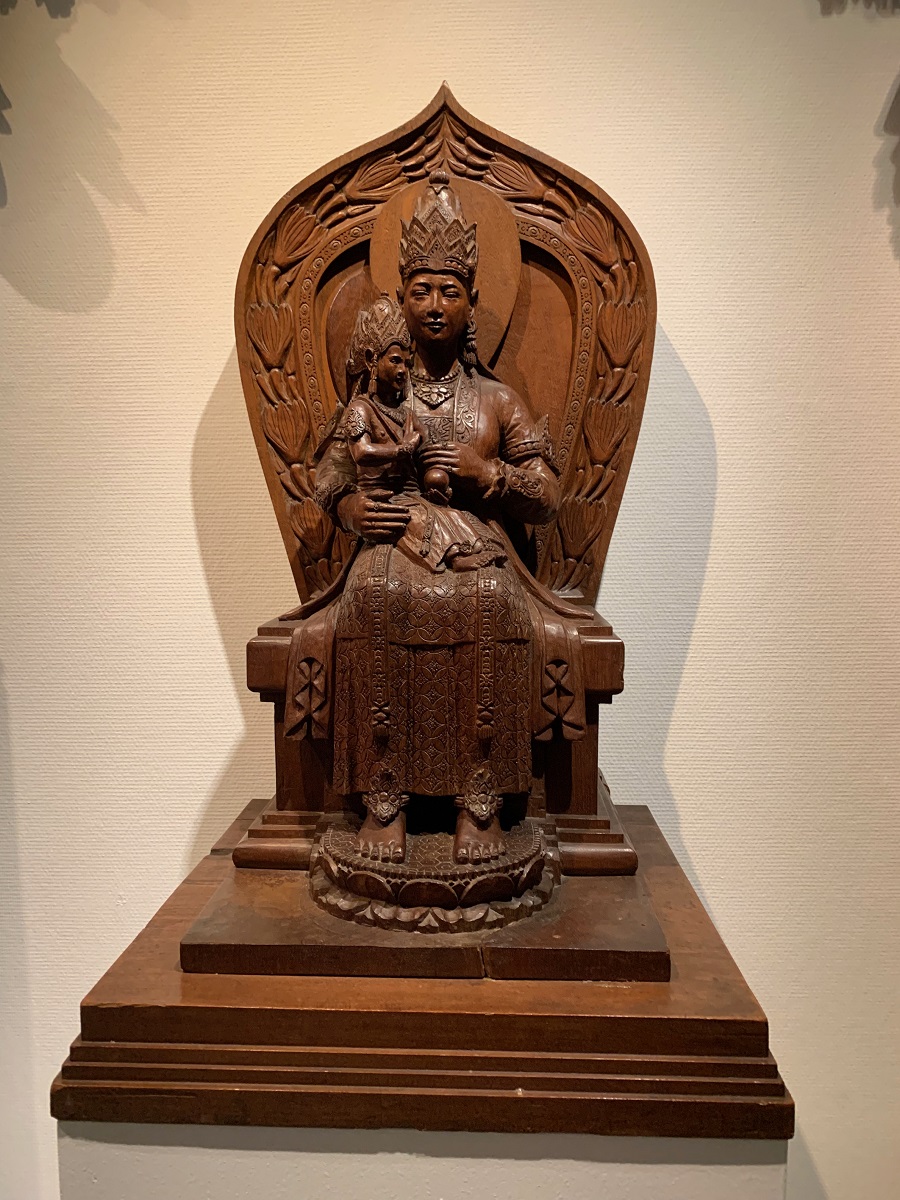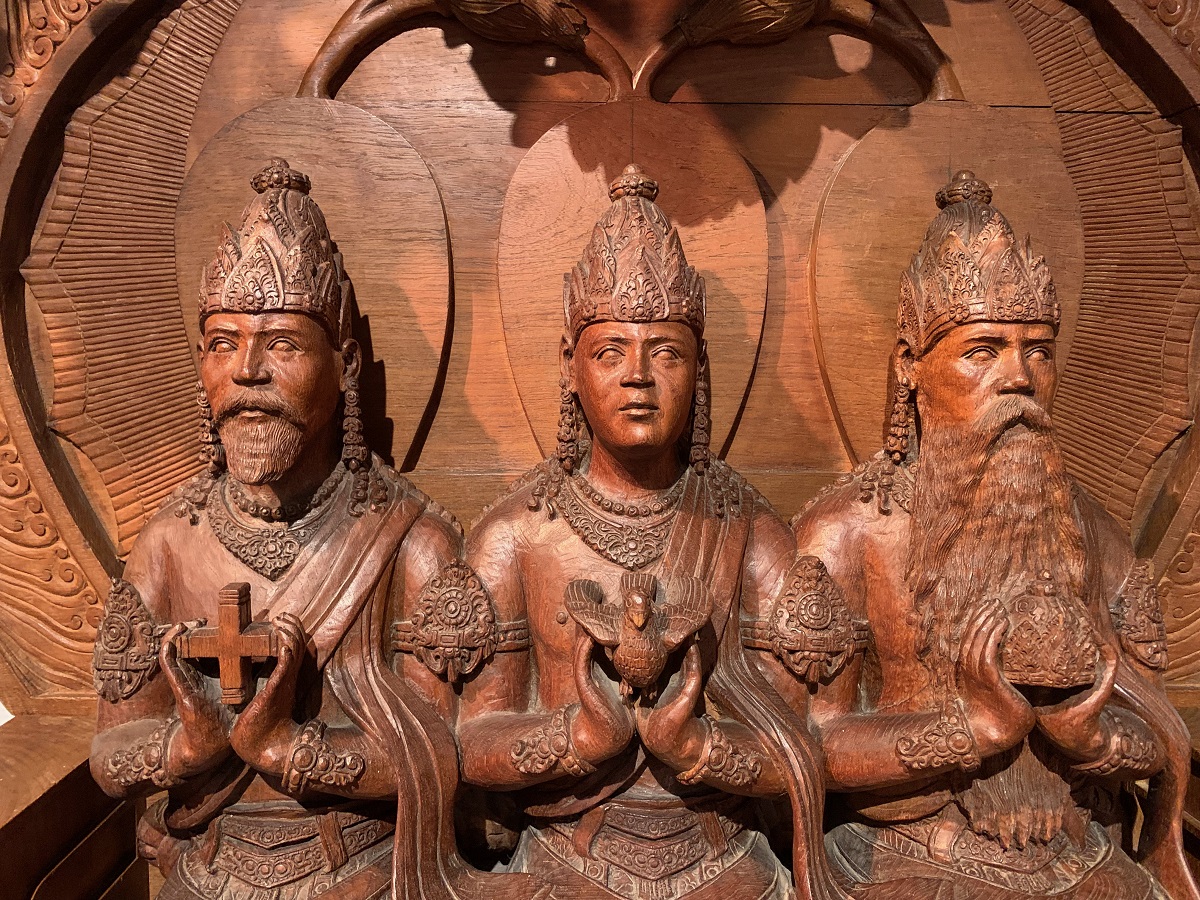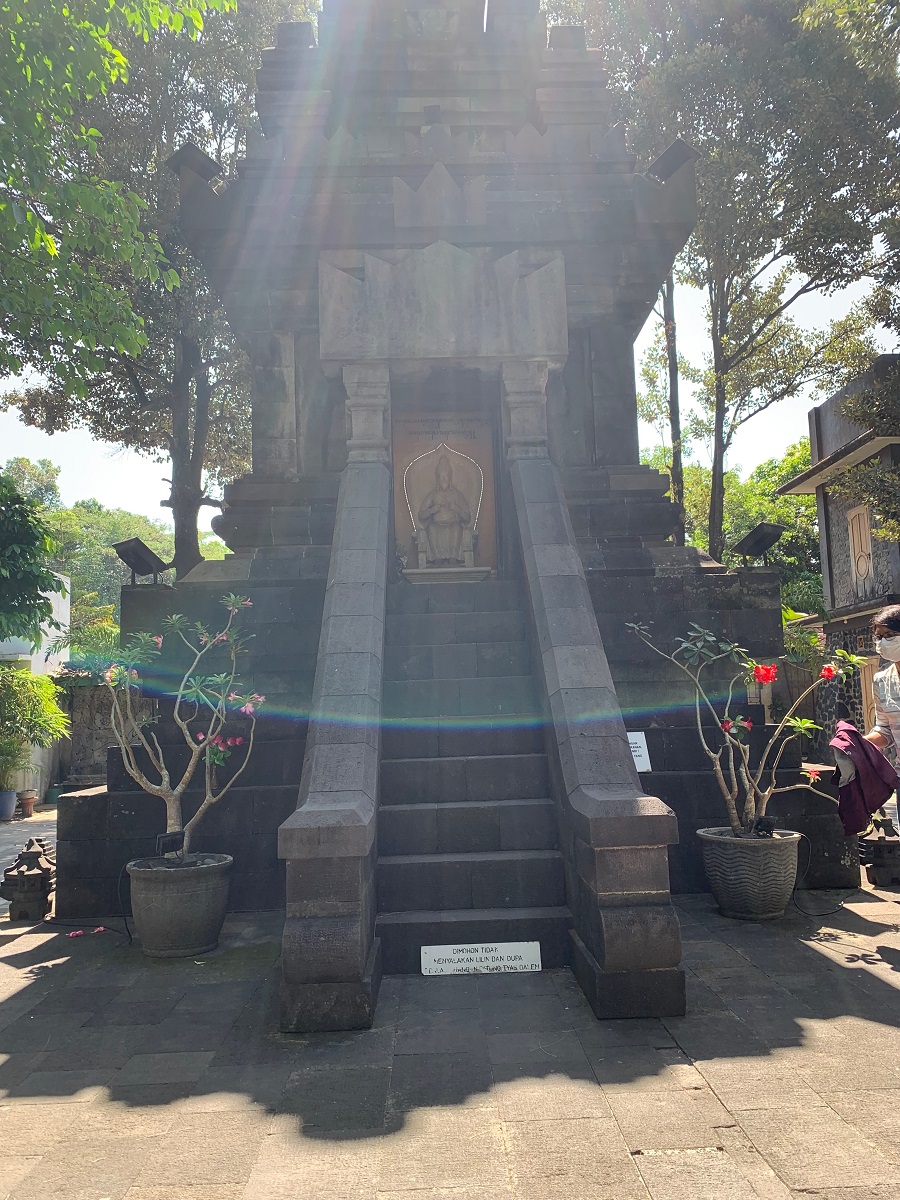Research project
Hybrid art in the former Dutch East Indies: the Iko ‘oeuvre’ as shared cultural heritage
This project involves research into the oeuvre of the Sundanese sculptor Iko, who has worked for the Catholic mission in Java and has carved sculptures for a chapel and church in Ganjuran. The images were designed by the Catholic layman Jos Schmutzer and are characterized by a fusion in style and symbolism of old Javanese-Hindu motifs and Christian themes. It is therefore an art form that can be called a hybrid. This also applies to other works from Iko's oeuvre, such as the copies of Buddhist-Hindu temple statues and the portrait bust of Queen Wilhelmina, which can be admired in the East Indies Hall at Noordeinde Palace in The Hague. This work not only bears witness to cultural hybridity, but also partly to shared authorship against the background of a colonial dynamic.
- Duration
- 2023 - 2024
- Contact
- Arthur Crucq
- Funding
- Dirkse-Bergsma Fonds (LUF)
Introduction
For the past two years, as part of the Museums, Collections and Society research group, Arthur Crucq has conducted research into how cultural heritage was dealt with in the Dutch East Indies in the 1920s and 1930s. One of the subjects that fascinated him concerns the production of art in the former Dutch East Indies, and so one day in the University Library of Leiden he came across a booklet written by Jos Schmuzter, Jan ten Berge, and Willem Maas about the possibility of a Christian-Javanese art.
The ideas formulated herein turned out to have been implemented in a series of statues carved by the Sundanese and Islamic sculptor Iko in the 1920s for the Catholic mission at Ganjuran (near Yogyakarta). These statues were created on the initiative and designed by the Catholic layman and sugar plantation owner Jos Schmuzter, who later served as a minister in the Gerbrandy III cabinet. Jos Schmutzer imagined a Javanese-Christian art in which traditional subjects such as the Madonna (Figure 1.) or the depiction of the Trinity (Figure 2.) were executed in a Javanese-Hindu style. He believed that Catholic dogma could be better transferred to the converts because in this way it was closer to what Schmuzter imagined as a still partly living tradition on Java.
An example of the result is the Sacred Heart statue in the chapel at Ganjuran, which is still visited by various believers (Figure 3). It stands in a specially designed chapel that is also modeled after a Javanese Hindu temple. The Christian theme of the image can be recognized by the Heart pointed to by Christ, while at the same time Christ is dressed in a Javanese sarong with a pattern borrowed from Javanese aristocratic batik patterns.
In this context, this symbol represents his divine authority. The shape of the headgear also has a Javanese origin, as does the lotus cushion and the ornaments of the seat.
-

Figure 1: Schmutzer-Iko, "Madonna met kind", djatihout, jaren twintig 20e eeuw, collectie Missiemuseum Steyl -

Figure 2: Schmuzter-Iko, "Drievuldigheid", djatihout, jaren twintig 20e eeuw, collectie Missiemuseum Steyl -

Figure 3: Heilig hart kapel met Heilig Hart beeld te Ganjuran, 1927-1930, Ganjuran, Bambanglipuro, Bantul residency, speciale regio Yogyakarta, Java, Indonesie
Research problem
Although much has been published between the 1920s and 1950s about the attempts to create a Javanese-Christian art, much less is known about Iko, the maker of the images. Iko did not have an official art education, but was known to be very talented; a self-taught. Also, as far as is known, he has never published himself. The case of the Schmutzer-Iko images therefore raises questions about authorship, ownership, cultural appropriation and thus about the legitimacy but also the effect of art forms that move between multiple traditions.
In the 1930s, Christian authors criticized the images made for the Catholic mission because of the risk that they would lead the converts too much to the original Javanese-Hindu culture. The hybrid art form would thus cause confusion rather than clarify Catholic dogmas.
That does not alter the fact that the images for the Christian community in Ganjuran have a place in the Christian liturgy to this day. Moreover, the Sacred Heart statue is not only visited and appreciated by Christians, but also by Muslims, Buddhists and Hindus. It shows that regardless of the religious context, these images can have meaning for different groups.
Research questions
In addition to the publication by Schmuzter, Ten Berge and Maas, much was published in mission journals in the 1920s and 1930s. Recently attention has been paid to the statues at Ganjuran from religious studies, for example in a publication by Albertus Bagus Laksana, and from Catholic history by Paul Luykx. However, hardly any art-historical research has been done into the images of Schmuzter and Iko and these have not previously been contextualized within the broader oeuvre of Iko, of which the images from the East Indies Gallery also form a part.
The question underlying this research therefore relates to the extent to which, and the arguments with which, Iko's images can be regarded as a hybrid form of art, to how the special formal language relates to the reception of the images, and on the extent to which, and the arguments with which, the images can be seen as shared cultural heritage.
Methodology
The questions will be answered, among other things, by means of visual analysis and archival research.
The collection of statues in djati wood made for the mission in Ganjuran is in the Mission Museum in Steyl. In addition, Iko's work can be found in the Netherlands in the East Indies room of the Noordeinde Palace in The Hague, in the World Cultures Collection and in private collections.
Archival research takes place in the Catholic Documentation Center at Radboud University in Nijmegen and in the archives of the Mission Museum in Steyl.
On Java, field research will take place at Ganjuran to gain insight into how the hybrid art form functions in the postcolonial context of contemporary Indonesian society.
Relevance
Given the changing attitude towards the colonial past, artistic production as it took place in the former Dutch East Indies also deserves renewed attention.
In the art-historical analysis of these hybrid art forms, it is important to account for the colonial dynamics in which they came about. In the convergence of traditions, European aesthetic ideas have been able to influence Indonesian art. Conversely, Indonesian art forms have also influenced Dutch art and the thinking about art, quality and craftsmanship in the Netherlands. In short, the exchange and confrontation between Dutch and Indonesian traditions have a history.
Iko's images form an excellent corpus for analyzing this past from the perspective of the aforementioned themes. Moreover, this research can shed light on the extent to which hybrid art forms can bridge cultural traditions, form shared cultural heritage, and show to what extent a hybrid form language influences meaning-making processes and makes new meanings possible.
